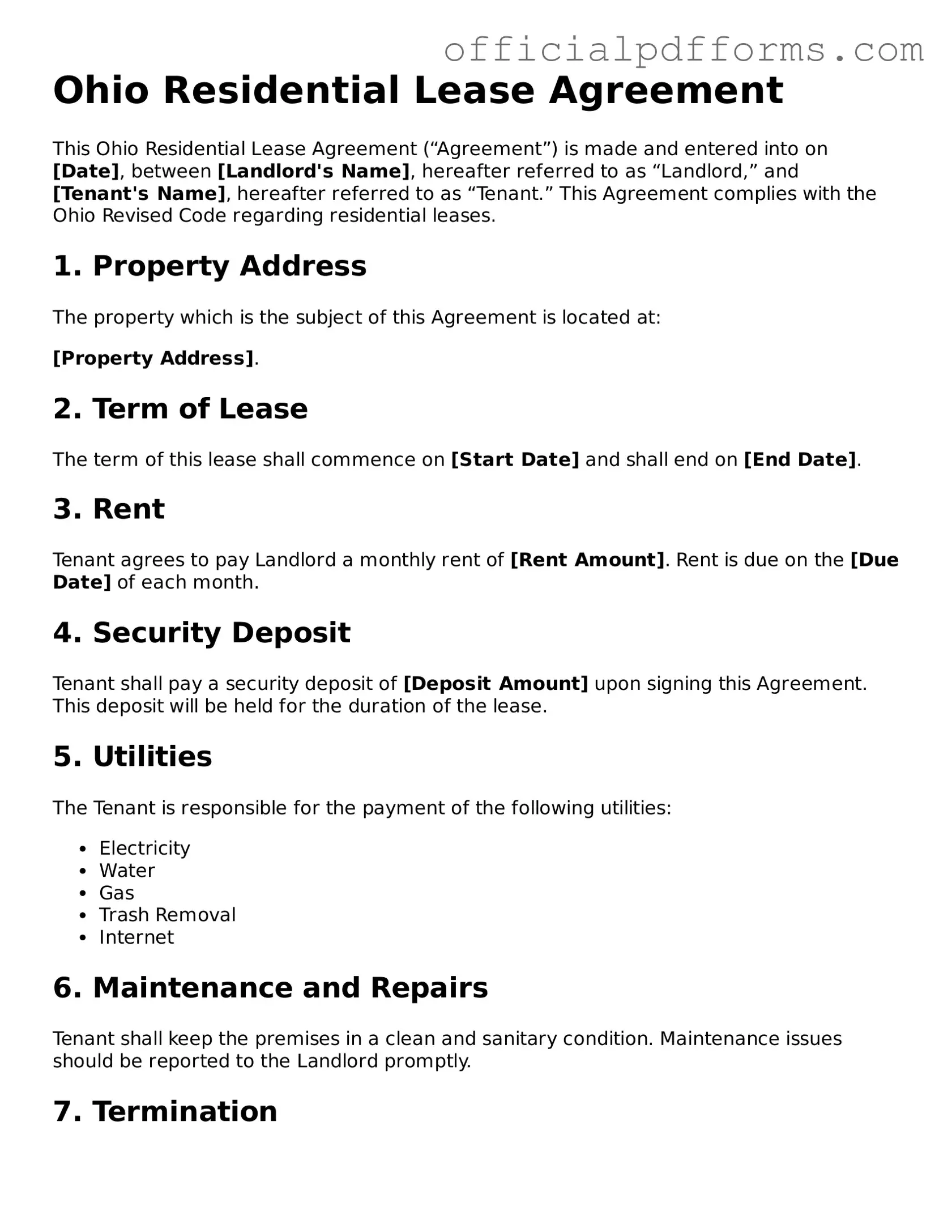What is an Ohio Residential Lease Agreement?
The Ohio Residential Lease Agreement is a legally binding contract between a landlord and a tenant. This document outlines the terms under which a tenant may occupy a rental property. It typically includes details such as the duration of the lease, rent amount, and responsibilities of both parties. The agreement serves to protect the rights of both the landlord and the tenant while ensuring clarity regarding the rental arrangement.
What key elements should be included in the lease agreement?
A comprehensive Ohio Residential Lease Agreement should include the following key elements:
-
Parties Involved:
Names of the landlord and tenant.
-
Property Description:
The address and description of the rental property.
-
Lease Term:
The start and end dates of the lease.
-
Rent Payment:
The amount of rent, payment due date, and acceptable payment methods.
-
Security Deposit:
The amount, terms of return, and any conditions for withholding.
-
Maintenance Responsibilities:
Who is responsible for repairs and maintenance.
-
Rules and Regulations:
Any specific rules regarding the property, such as pet policies or noise restrictions.
How long is a typical lease term in Ohio?
In Ohio, lease terms can vary widely. Many residential leases are for one year, but shorter or longer terms are also common. Month-to-month leases provide flexibility for both parties, allowing either to terminate the agreement with proper notice. It is essential to clearly specify the lease duration in the agreement to avoid misunderstandings.
Can a landlord increase rent during the lease term?
Generally, a landlord cannot increase rent during the lease term unless the lease agreement explicitly allows for it. If the lease is month-to-month, the landlord may increase rent with proper notice, typically 30 days. It is advisable for both landlords and tenants to review the lease terms carefully regarding rent adjustments.
What happens if a tenant wants to break the lease early?
If a tenant wishes to break the lease early, they should first review the lease agreement for any early termination clauses. Many leases include specific conditions that allow for early termination, such as providing notice or paying a fee. If no such provisions exist, the tenant may still be responsible for paying rent until the lease ends or until a new tenant is found.
Are there any specific laws governing residential leases in Ohio?
Yes, Ohio has specific laws that govern residential leases. These laws cover various aspects, including security deposits, eviction processes, and tenant rights. The Ohio Revised Code provides guidelines that landlords and tenants must follow to ensure compliance with state regulations. It is important for both parties to be aware of these laws to protect their rights and responsibilities.
What should a tenant do if they experience issues with their landlord?
If a tenant encounters issues with their landlord, such as failure to make necessary repairs or unlawful eviction, they should first communicate directly with the landlord to resolve the matter. If this approach does not work, tenants may seek assistance from local housing authorities or legal aid organizations. Documentation of all communications and issues is crucial for any potential legal actions.
Is it necessary to have a written lease agreement?
While oral agreements can be legally binding, having a written lease agreement is highly recommended. A written document provides clarity and serves as evidence of the agreed-upon terms. It helps prevent disputes by clearly outlining the rights and responsibilities of both the landlord and tenant. Therefore, it is best practice for both parties to sign a written lease agreement before occupancy begins.
